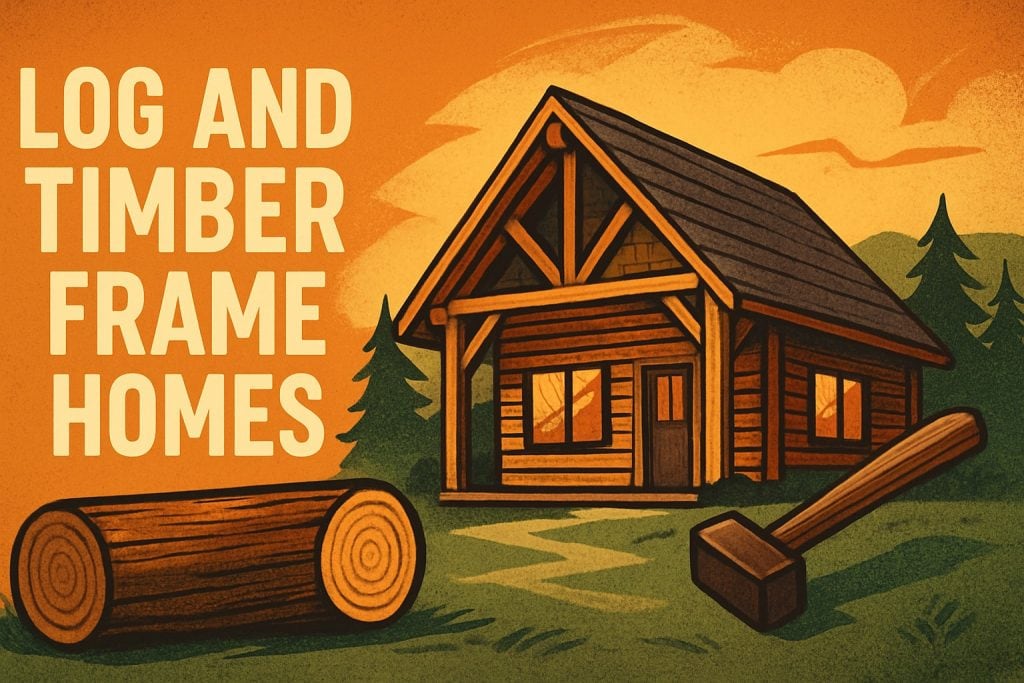Imagine stepping into a home where rustic charm meets modern efficiency, each detail crafted for sustainability and timeless appeal. The allure of log and timber frame homes is reshaping the UK housing market, offering a unique blend of tradition and innovation.
This essential guide will walk you through the latest in log and timber frame homes for 2025. You'll discover why these properties are celebrated for their eco-friendly design, lasting durability, and unmistakable style.
Whether you're planning, building, or buying, this guide delivers up-to-date insights to help you make informed decisions. Inside, you'll find definitions, key benefits, current trends, details on construction and sustainability, cost factors, and expert tips—everything you need for your journey to a dream timber home.
Understanding Log and Timber Frame Homes
Imagine stepping into a home where tradition meets innovation. Log and timber frame homes offer a unique blend of rustic allure and modern design, capturing the imagination of homeowners across the UK. To make an informed decision, it is essential to understand the differences, benefits, and considerations of each construction style.
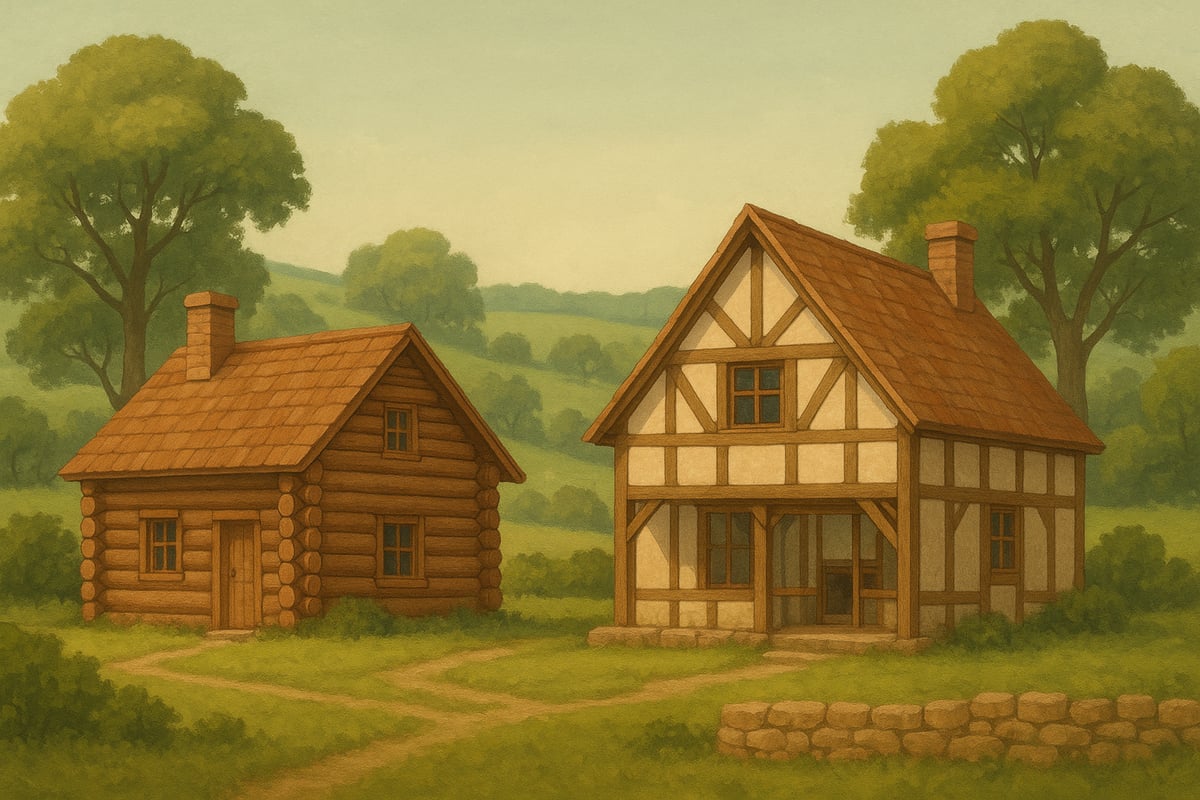
Defining Log vs. Timber Frame Construction
Log and timber frame homes are often grouped together, yet their construction methods are distinct. Log homes are built from solid logs stacked horizontally, forming both the structural frame and exterior. In contrast, timber frame homes use a post and beam skeleton, with infill panels for walls and insulation.
Visually, log homes evoke the image of Scandinavian cabins, with rounded logs and rustic charm. Timber frame homes, such as British oak-framed houses, feature exposed beams and flexible layouts. Over centuries, these styles have evolved in the UK, adapting to local climates and resources, yet both remain icons of natural building.
Advantages and Disadvantages of Each Style
Choosing between log and timber frame homes means weighing their unique pros and cons. Structurally, both offer impressive durability and longevity, with timber frames often allowing for more open-plan interiors. Insulation performance varies, as timber frames can achieve higher energy efficiency through modern infill materials.
| Feature | Log Homes | Timber Frame Homes |
|---|---|---|
| Durability | High | High |
| Insulation | Good, but can vary | Excellent with modern panels |
| Design Flexibility | Moderate | High |
| Maintenance | Regular upkeep required | Lower, depending on finishes |
Maintenance needs differ; log homes require ongoing sealing and care, while timber frames benefit from less intensive upkeep. Ultimately, log and timber frame homes provide flexible options for those seeking character and sustainability.
Popularity and Market Trends in 2025
Interest in log and timber frame homes continues to rise, driven by a growing desire for eco-friendly and bespoke living. The UK market has seen a significant uptick in demand, especially as remote work and lifestyle shifts prompt people to seek unique, sustainable spaces.
Recent statistics show timber frame construction is projected to reach a 27% market share by 2025, reflecting its appeal for both new builds and renovations. This surge is supported by advances in sustainable forestry and energy-efficient technologies. For more insight on market growth and the role of timber in addressing housing challenges, explore the timber frame construction projected to reach 27% market share by 2025.
Who Should Consider a Log or Timber Frame Home?
Log and timber frame homes are especially suited to eco-conscious buyers, self-builders, and those looking for rural retreats. Families seeking healthy living, retirees desiring a peaceful environment, and investors interested in holiday lets all find value in these structures.
The trend of converting agricultural land into timber frame dwellings is growing, offering bespoke solutions for various lifestyles. Whether aiming for a family residence or a unique rental property, log and timber frame homes deliver lasting appeal and adaptability.
Key Considerations Before Choosing
Before committing to log and timber frame homes, consider several key factors:
- Planning permission and compliance with UK building regulations.
- Site suitability, including access for construction and utilities.
- Budget planning for design, materials, and labour costs.
These considerations ensure a smooth project journey, from initial dream to reality.
Design Trends and Customisation in 2025
In 2025, log and timber frame homes are at the forefront of sustainable design, blending tradition with innovation. Homeowners are exploring new ways to personalise their spaces, integrating cutting-edge technology, and prioritising eco-friendly materials. Let us examine the latest trends shaping these unique homes.
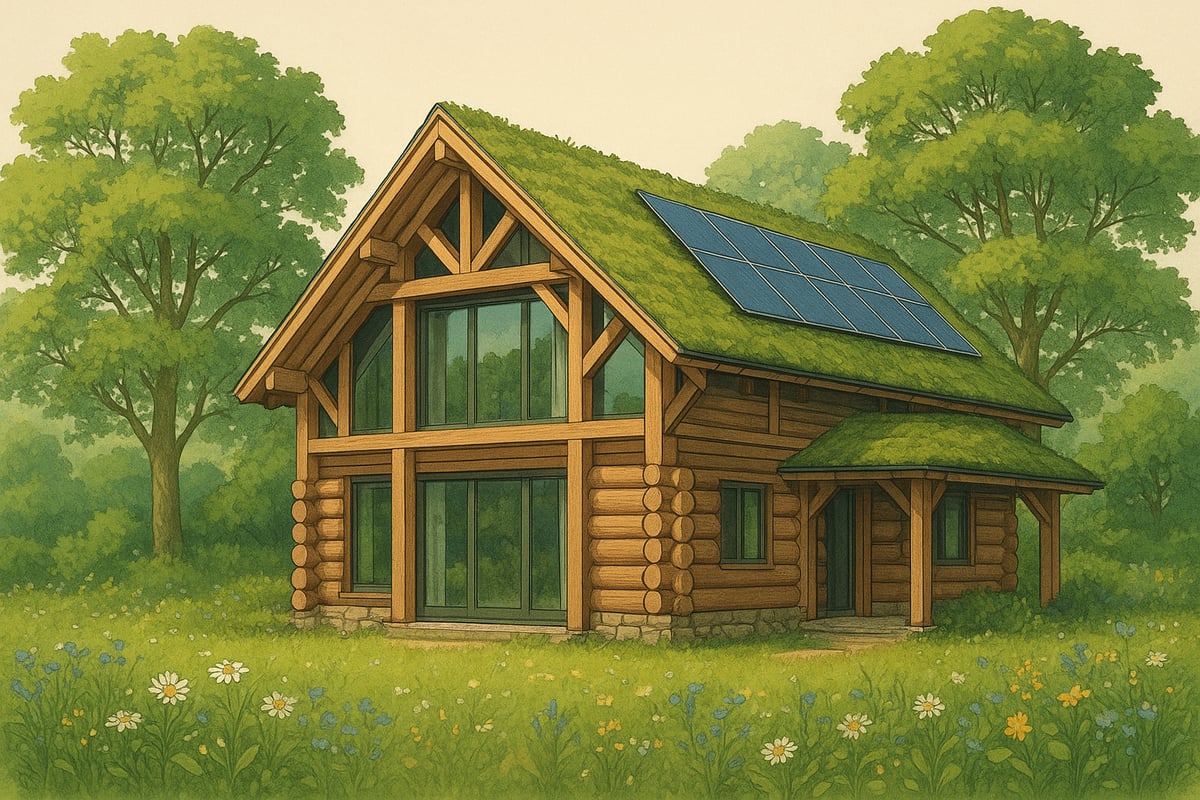
Architectural Styles and Influences
Architectural inspiration for log and timber frame homes in 2025 draws from a mix of contemporary and classic traditions. Many homeowners choose sleek, minimalist lines combined with the warmth of exposed wood. The influence of Scandinavian cabins, Alpine chalets, and British vernacular architecture is evident in rooflines and structural details.
Designers focus on creating harmony between indoor and outdoor spaces. Large windows and sliding doors connect interiors to natural landscapes, while traditional oak frames or larch beams provide a sense of permanence. Whether you prefer a modern retreat or a countryside cottage, log and timber frame homes offer remarkable versatility in style.
Interior Design and Layout Innovations
Inside log and timber frame homes, open-plan layouts are a leading trend. Vaulted ceilings, mezzanines, and gallery spaces enhance the feeling of spaciousness and light. Exposed beams and natural materials, such as clay plaster and stone, add warmth and character.
Biophilic design is gaining popularity, with features like indoor plants, living walls, and natural textures promoting well-being. Flexible spaces, such as adaptable home offices or guest rooms, reflect changing lifestyles. These innovations ensure that log and timber frame homes remain both functional and inviting for modern families.
Smart Home Integration and Modern Amenities
Technology is seamlessly woven into log and timber frame homes, making daily living more convenient and efficient. Smart lighting, heating, and security systems are now standard features. Homeowners can control their environment using mobile apps or voice commands.
Energy-efficient appliances and renewable energy systems, such as solar panels and ground source heat pumps, are becoming the norm. These advancements help reduce running costs and environmental impact. The integration of modern amenities ensures that log and timber frame homes are as comfortable as they are stylish.
Customisation Options and Bespoke Features
Personalisation is at the heart of log and timber frame homes in 2025. Buyers can tailor floor plans to suit their lifestyle, from open family rooms to private reading nooks. Unique joinery, handcrafted staircases, and feature fireplaces add a bespoke touch to each property.
Many homeowners opt for panoramic glazing, custom cabinetry, or artisan finishes. For those seeking true individuality, Bespoke timber frame solutions offer a collaborative approach, allowing clients to work with skilled designers and craftspeople. This flexibility is a key reason why log and timber frame homes are so appealing.
Sustainability and Eco-Friendly Materials
Sustainability is a driving force behind the resurgence of log and timber frame homes. Builders prioritise FSC-certified or reclaimed timber, ensuring responsible sourcing. Natural insulation materials, such as sheep’s wool or wood fibre, improve energy efficiency without compromising indoor air quality.
Non-toxic finishes and low VOC paints are standard, reducing environmental harm and promoting healthier living spaces. Green roofs and rainwater harvesting systems are common features, helping homeowners lower their carbon footprint. These choices highlight the commitment to eco-friendly living in log and timber frame homes.
Acorn to Oak Framing: Bespoke Timber Frame Solutions
Acorn to Oak Framing specialises in creating log and timber frame homes tailored to each client’s vision. Their designs blend traditional craftsmanship with innovative methods, ensuring every project is unique and sustainable.
Using locally sourced oak, Acorn to Oak Framing delivers homes that comply with UK building regulations and meet the highest standards of quality. Services include detailed consultations, bespoke design, manufacturing, and expert installation across the UK. For those seeking a truly personalised home, their expertise ensures exceptional results.
Planning and Building Your Log or Timber Frame Home: Step-by-Step
Embarking on a project to create log and timber frame homes is both exciting and rewarding. Whether you are planning your forever home or a unique investment, understanding the process from concept to completion is essential. This step-by-step guide will help you navigate each stage with confidence, ensuring your journey is as smooth as possible.
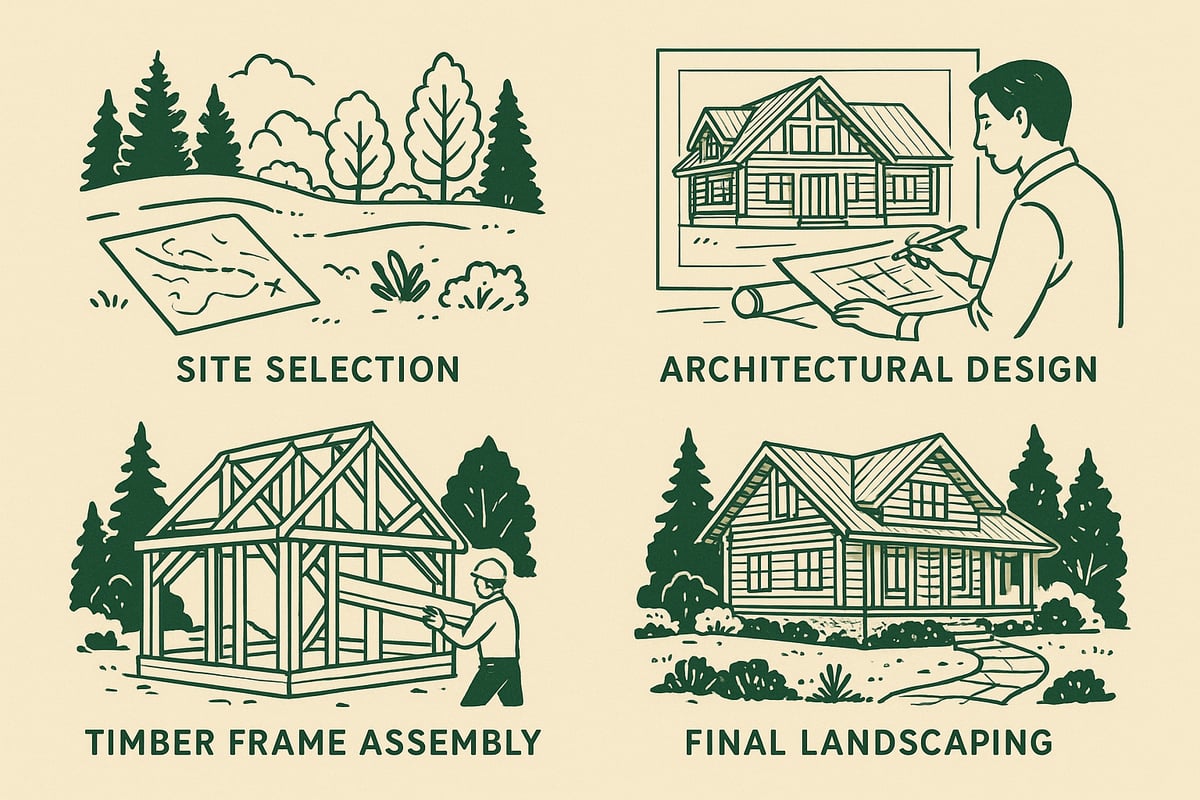
Step 1: Initial Planning and Budgeting
The foundation of any successful log and timber frame homes project is careful planning and realistic budgeting. Begin by defining the scope, size, and style of your desired home. Consider the number of bedrooms, open-plan living spaces, and any bespoke features you want to include.
Next, establish a comprehensive budget. Account for land purchase, design fees, materials, labour, and contingency funds. For example, a typical 3-bedroom timber frame home in the UK might cost between £1,800 and £2,500 per square metre, depending on location and specification.
A clear budget will guide every decision, helping you set realistic expectations and avoid costly surprises. Early planning ensures your vision for log and timber frame homes stays on track and within reach.
Step 2: Securing Land and Permissions
Finding the right plot is crucial for log and timber frame homes. Assess the site for access, orientation, soil conditions, and services like water and electricity. Consider proximity to amenities and transport links if you plan to live there full-time.
Navigating UK planning permission and building regulations can be complex. Engage with the local planning authority early to understand restrictions, especially in rural or conservation areas. Prepare for common challenges, such as access roads or ecological surveys, which may impact your timeline.
Securing permissions before investing heavily in design or materials will save time and money. Proper due diligence at this stage is vital for a smooth build process for log and timber frame homes.
Step 3: Designing Your Home
Work alongside experienced architects and timber frame specialists to turn your ideas into reality. The design stage shapes the character, efficiency, and comfort of your log and timber frame homes.
Collaborate on floor plans, elevations, and bespoke elements such as vaulted ceilings or panoramic glazing. Prioritise energy efficiency and sustainability from the outset, incorporating passive solar design, high-performance insulation, and eco-friendly materials.
A well-thought-out design will not only reflect your lifestyle but also improve long-term value and comfort. This is the time to balance creativity with practicality in your log and timber frame homes project.
Step 4: Choosing Materials and Suppliers
Selecting the right timber species and suppliers is a defining decision in building log and timber frame homes. Popular choices include oak for traditional aesthetics, pine for cost-effectiveness, and larch for durability.
When comparing suppliers, evaluate their reputation, commitment to sustainability, and compliance with UK building standards. Request samples and visit completed projects if possible. For example, higher-grade oak may cost more but offers superior longevity and appearance.
A table comparing timber options can help clarify your choices:
| Timber Type | Appearance | Durability | Cost per m² | Best Use |
|---|---|---|---|---|
| Oak | Rich, classic | High | High | Feature frames, beams |
| Pine | Light, clean | Moderate | Lower | Structural elements |
| Larch | Warm, rustic | High | Moderate | Cladding, exteriors |
Thoughtful selection of materials ensures your log and timber frame homes meet both aesthetic and performance goals.
Step 5: Construction Process Overview
With plans and materials ready, construction of log and timber frame homes begins with site preparation and foundation work. Skilled teams assemble the timber frame on-site, followed by weatherproofing, insulation, and interior fit-out.
The typical build timeline ranges from 6 to 12 months, depending on complexity and weather conditions. Staying engaged throughout the process is crucial. Regular site visits and clear communication with your project manager will keep things moving efficiently.
For further practical insights into the construction process, explore these Timber framed home insights, which provide real-world examples and advice for navigating challenges specific to timber builds.
Step 6: Finishing Touches and Handover
As your log and timber frame homes near completion, attention turns to internal finishes, joinery, and fixtures. Choose flooring, lighting, and fittings that complement your design vision. Landscaping the outdoor area will enhance kerb appeal and create inviting spaces for relaxation or entertaining.
Before moving in, conduct a thorough snagging inspection to identify any minor defects or incomplete works. Final inspections ensure compliance with building regulations and that every detail meets your expectations.
A well-managed handover marks the successful end of your log and timber frame homes journey and the beginning of life in your bespoke property.
Common Pitfalls and How to Avoid Them
Even well-planned log and timber frame homes projects can encounter challenges. Underestimating costs or timelines is a frequent issue, so always build in contingency funds and allow for seasonal delays.
Inadequate site access or preparation can slow progress, while inexperienced project management may lead to costly mistakes. Choose reputable professionals, maintain clear contracts, and stay actively involved at every stage to ensure success.
Sustainability, Energy Efficiency, and Environmental Impact
Log and timber frame homes are increasingly recognised as a benchmark for sustainable living in the UK. Their unique blend of natural materials and advanced building techniques creates properties that are both environmentally friendly and highly efficient. As eco-consciousness shapes the future of housing, understanding the true impact of log and timber frame homes is essential for anyone considering this building approach.
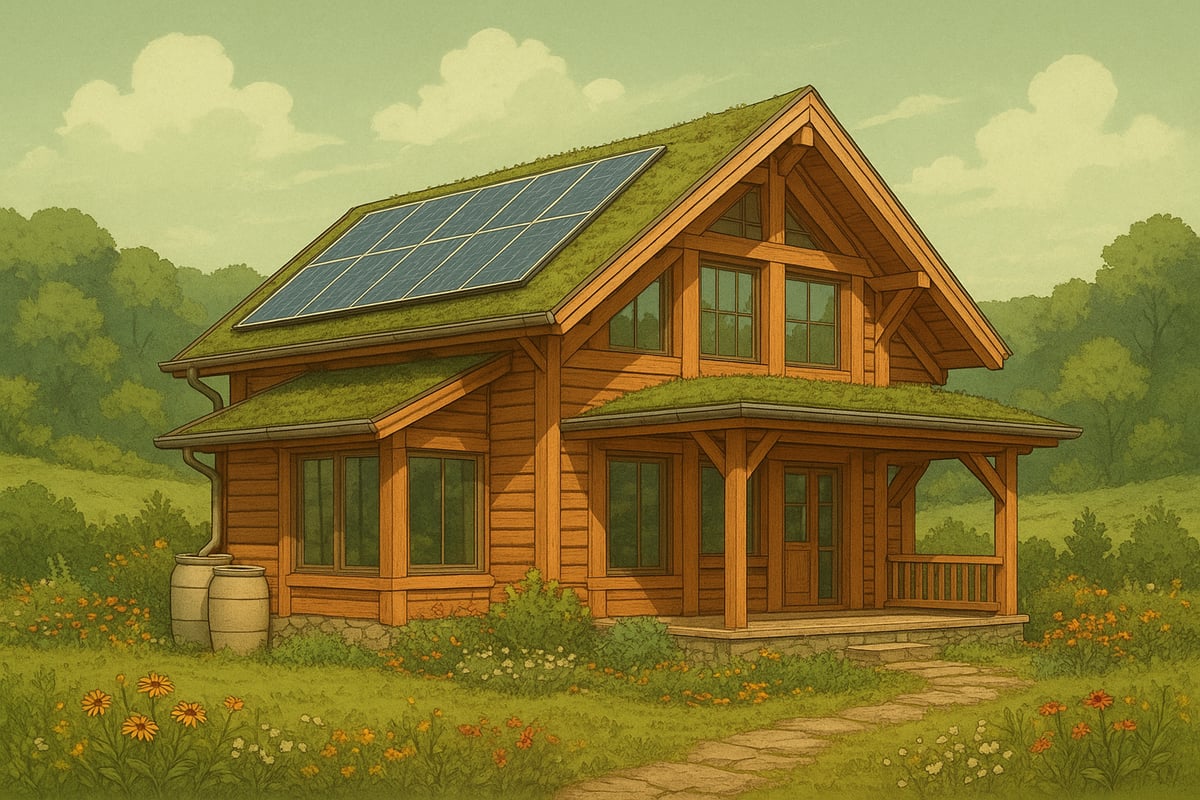
Timber as a Sustainable Building Material
Timber is one of the most sustainable construction materials available, making log and timber frame homes an excellent choice for eco-minded individuals. Timber not only sequesters carbon throughout its lifespan but also requires significantly less energy to process compared to traditional materials like brick, concrete, or steel.
In the UK, the shift towards timber construction is increasingly evident. For example, building with timber can reduce a home's carbon footprint by up to 60 percent. This lower embodied energy means that log and timber frame homes contribute positively to climate goals while supporting the use of renewable resources.
Energy Efficiency Benefits
Energy efficiency is a defining feature of log and timber frame homes. The natural insulating properties of wood help maintain comfortable indoor temperatures year-round, reducing reliance on artificial heating and cooling systems. Advanced construction methods, such as airtight building envelopes and high-performance glazing, further enhance energy savings.
Many log and timber frame homes are now designed to meet Passivhaus or SAP standards, ensuring exceptional thermal performance. As a result, homeowners benefit from lower utility bills and a smaller environmental footprint, making these homes a smart investment for the future.
Renewable Energy and Eco Technologies
Modern log and timber frame homes are increasingly integrating renewable energy systems and cutting-edge eco technologies. Solar panels, ground and air source heat pumps, and even small-scale wind turbines are commonly specified to further reduce environmental impact.
Smart home controls allow for real-time energy monitoring and optimisation, supporting sustainable living. There are inspiring examples of off-grid log and timber frame homes that demonstrate how renewable technologies can deliver comfort, resilience, and independence from the national grid.
Responsible Forestry and Certification
The sustainability of log and timber frame homes depends on responsible sourcing of timber. Choosing wood certified by organisations such as the FSC or PEFC ensures that forests are managed ethically and with long-term regeneration in mind. Local supply chains also help minimise transportation emissions and support UK forestry initiatives.
Notably, over 30% of the UK’s top builders own timber-frame factories, reflecting a strong industry commitment to sustainable practices. Government incentives further encourage the adoption of certified timber and sustainable construction methods for new homes.
Life Cycle and Long-Term Environmental Impact
Log and timber frame homes are designed for longevity, with many properties lasting for generations when properly maintained. Timber is not only durable but also recyclable at the end of its useful life, reducing overall environmental impact.
Routine maintenance, such as treating exterior wood and ensuring proper ventilation, extends the lifespan of these homes. At the end of their life cycle, timber components can be repurposed, recycled, or returned to the earth, supporting a circular economy and minimising waste.
Costs, Financing, and Investment Value
Understanding the financial side of log and timber frame homes is essential for any prospective homeowner or investor. From upfront costs to long-term returns, knowing what to expect can help you make confident decisions and maximise your investment.
Cost Breakdown: Materials, Labour, and Site Work
The costs associated with log and timber frame homes vary based on factors such as design complexity, location, and chosen materials. Typically, you can expect costs in the range of £1,800 to £2,800 per square metre for a custom build. This includes the structural timber frame, insulation, and basic finishes.
Site work, including foundations and ground preparation, can account for 10–20 percent of the total budget. Labour costs are influenced by the expertise required for specialist joinery and assembly. Comparing timber with traditional brick or block construction, timber often offers faster build times and predictable costs, making it an attractive option for many.
Financing Options and Mortgages
Financing log and timber frame homes in the UK is increasingly accessible. Self-build mortgages are designed to release funds in stages as construction progresses, helping you manage cash flow throughout the project. Many lenders now recognise the value and demand for sustainable homes, offering competitive rates and flexible terms.
Additionally, government-backed schemes such as the Help to Build programme can provide financial support for self-builders. Green loans and grants are available for homes that meet high environmental standards, helping to offset costs for energy-efficient features and renewable technologies.
Return on Investment and Resale Value
Log and timber frame homes are proving to be sound investments in the UK housing market. These properties are highly sought after by buyers who value sustainability, character, and energy efficiency. As demand grows, timber frame homes often achieve 10 to 15 percent higher resale values compared to conventional builds.
The market outlook is particularly strong, with the UK timber construction market expected to grow at 10% CAGR from 2025 to 2033. This projected growth underscores the increasing desirability and potential for capital appreciation in timber-based properties.
Ongoing Costs: Maintenance and Energy Savings
Maintenance for log and timber frame homes is generally straightforward, especially when high-quality materials and finishes are used. Regular inspections, refinishing exposed wood, and checking seals help maintain the home’s appearance and structural integrity. Annual maintenance costs are typically modest compared to traditional homes.
Energy savings are a significant advantage, thanks to excellent insulation and airtight construction. Many owners report lower heating bills and reduced carbon footprints, further enhancing the long-term value of investing in timber frame living.
Budgeting Tips and Cost-Saving Strategies
Smart budgeting can make building log and timber frame homes more affordable. Sourcing materials locally not only reduces transportation costs but also supports the regional economy. Consider phased construction, allowing you to spread expenses and prioritise essential features first.
DIY involvement in finishing work, such as landscaping or interior decoration, can also yield savings. Comparing suppliers and negotiating contracts ensures you get the best value for your investment. For more details on construction options, see Timber frame products explained.
Expert Tips and Frequently Asked Questions
Building or buying log and timber frame homes is a rewarding journey, but it requires careful planning and the right expertise. Here, we share essential advice, answer top questions, guide you through the regulatory landscape, and point you to valuable resources, ensuring your project is a success.
Insider Advice for a Successful Project
When embarking on a log and timber frame homes project, choosing experienced professionals is paramount. Look for architects, builders, and suppliers with a proven track record in timber construction. This ensures your home meets both your expectations and regulatory standards.
Clear communication is vital. Establish detailed contracts, set realistic timelines, and maintain regular dialogue with all parties. Schedule frequent site visits to monitor progress and quality. Prioritise suppliers who offer sustainable materials and can demonstrate compliance with UK building codes. By following these steps, you enhance the durability and beauty of your log and timber frame homes, maximising long-term value.
Common Questions Answered
How long do log and timber frame homes last? With proper maintenance, these structures can endure for generations, often exceeding 100 years. Are they suitable for the UK climate? Yes, modern designs and insulation techniques ensure excellent performance, even in damp or cold conditions.
What is the maintenance involved? Regular checks for moisture ingress, wood treatment, and upkeep of finishes are essential. The rising popularity of log and timber frame homes is reflected in recent market data, such as the Private sector home registrations up 62% in Q1 2025, underlining growing demand and confidence in this sector.
Navigating Planning and Regulations
Understanding UK planning and building regulations is crucial for log and timber frame homes projects. Key requirements include meeting insulation standards, fire safety, and accessibility. Engage with local planning authorities early in your project to identify any restrictions, especially in conservation areas or when adapting listed buildings.
Work closely with your design team to ensure all plans comply with current building codes. This includes SAP ratings for energy efficiency and adherence to structural safety guidelines. Addressing these factors from the outset will help avoid costly delays and ensure your log and timber frame homes project progresses smoothly.
Resources and Where to Learn More
Expand your knowledge of log and timber frame homes by exploring trusted resources. Industry associations like the Structural Timber Association and Timber Development UK offer technical guides and news. Books on sustainable homebuilding and timber architecture provide deeper insights.
For visual inspiration, browse the Timber home photo gallery to see completed projects and design ideas. Attending homebuilding exhibitions or local open days can also connect you with experts and fellow enthusiasts, making your journey even more informed and enjoyable.
Now that you have a clear understanding of what makes log and timber frame homes so unique—from their sustainable credentials to the beauty and flexibility of bespoke design—the next step is turning your vision into reality. If you are ready to enhance your lifestyle with a home that is meticulously crafted, energy efficient, and truly one of a kind, we are here to guide you every step of the way. Explore how Acorn to Oak Framing can help you create a space tailored to your needs and aspirations. Your dream home journey begins here—BUILD NOW.
